Este post também está disponível em:
Português
English
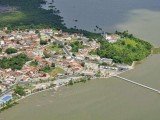
São Francisco do Conde is a Brazilian municipality located in the Metropolitan Region of Salvador da Bahia.
Between islands and mangroves, coastal coast and Atlantic Forest, São Francisco do Conde enchants by its natural exuberance.
Two embarkation points serve as a starting point for any nautical itinerary on boat trips that unveil the charms of the region: the pier, on the urban waterfront, and Santo Estevão, a fishing village 32 kilometers from the city center.
Take the opportunity to visit the islands of the municipality – Cajaíba, Fontes, Pati – and go down to the mouth of the Sergi River or the Subaé River, enjoying the beautiful scenery sculpted by nature.
The history of Colonial Brazil is also present in São Francisco do Conde, both in the architecture and in the habits of its people.
View the map of Baía de Todos os Santos
The folklore presentations recall the customs of yesteryear and keep the traditional regional culture alive.
The cuisine, with emphasis on fish baked in banana leaf, corn flour porridge and tapioca, preserves the typical preparation of the Tupinambás and the Black Caetés, first inhabitants of the region;
Videos about São Francisco do Conde in Bahia
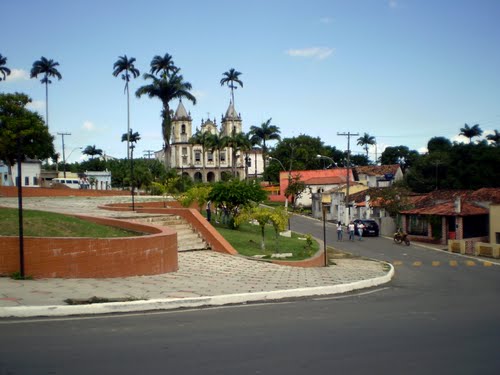

História de São Francisco do Conde

História de São Francisco do Conde na Bahia04:39

Guia de São Francisco do Conde na Bahia
Municipality of São Francisco do Conde
Discover the history of this place that has a lot of influence from the colonial era, get to know its tourist and historical points.
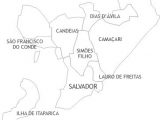
In 1618, by order of the Count of Linhares, a convent and a church were built on top of a hill in the Recôncavo Baiano, where the city of São Francisco do Conde would later appear in 1698.
The name honors the city’s patron saint and Count Fernão Rodrigues, who inherited the land from the 3rd Governor-General of Brazil, Mem de Sá.
The region where the city is located was conquered by the Portuguese empire through wars fought against the Indians who lived on the banks of the Paraguaçu and Jaguaribe rivers.
São Francisco do Conde, the third municipality of the Recôncavo, has a great heritage of Colonial Brazil.
The city is rich in sobrados, churches and mills, built during the Portuguese administration in the country. The imposing architecture is an invitation to take a walk back to the 16th century, remembering and keeping alive an important part of Brazil’s history.
The municipality is located in an area where Atlantic Forest reserves and rich mangroves are still preserved, contributing to the biodiversity of the region.
In the past, the wealth of the city was based on sugar cane plantations that started the economic development of the area.
Today, oil extraction, refining and processing are the main economic activities in the region.
São Francisco do Conde retains its country town atmosphere, with its baroque architecture, tranquillity and its canoe port for fishermen.
The city is also developing and has a beautiful, urbanized and modern seafront, bringing an exciting visual contrast.
The diversity of ethnic groups that helped build São Francisco do Conde culturally is present in the daily life of the city.
The imperial palm trees, symbol of the Portuguese administration, are everywhere, the colonial buildings are majestic and preserve the memory of the region. The Tupinambás and the Caetés Negros left behind, among other things, a rich gastronomy.
Corn flour porridge, tapioca and the preparation of fish baked in banana leaves are examples of this heritage.
The skill with fishing and the technique of women shellfish gatherers also emerged with the first inhabitants of the region. São Francisco do Conde has a rich history that is intertwined with the history of Brazil.
The city is unique and manages to bring together history, culture and the typical tranquility of the Recôncavo Baiano in one place.
São Francisco do Conde, the third municipality of Recôncavo Baiano, has a great heritage of Colonial Brazil. The city is rich in sobrados, churches and mills, built during the Portuguese administration in the country.
The imposing architecture is an invitation for a walk to the 16th century, remembering and keeping alive an important part of Brazil’s history.
Learn more about the main tourist and historical points of the charming city of São Francisco do Conde.
Tourist Spots of São Francisco do Conde BA
1. Casa de Câmara e Cadeia (City Hall Building)
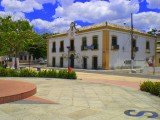
The Town Hall, located in Praça Independência, in the lower part of the city, is currently the building of the City Hall and the City Council. From the “pier” that is located there you can see the island of Cajaíba and part of the Bay of All Saints.
The house was financed with white gold tithes from all over the Recôncavo and built between 1693 and 1750.
At the time, the Portuguese government wanted the Town Hall to represent a historical monument of the reconquest of the Northeast from the Dutch and, at the same time, to become a symbol of the Brazilian national union.
In the past, the first floor of the building served as a jail and guard quarters, while the upper floor housed the Senate of the Chamber and the Intendency (city administration).
The building retains its original carpentry and upholstery and the railings of the balconies on the main façade are still the same as those of the 19th century.
The place brings a harmonious combination between the colonial architecture of past centuries and the modernity that is expressed through the painting, its surroundings and the administration.
2. Convent of Santo Antônio
Heritage listed by IPAC.

The Santo Antônio Convent, inaugurated in 1936, was born from the demand of the residents of the future “Villa de São Francisco” who requested the construction of a Franciscan convent.
The monument is composed of Church, Convent and Third Order is located in Arthur Sales Square, integrating the Historic Center of the City and is a heritage site listed by IPAC.
The place has a valuable artistic collection that includes sacred pieces, tiles, furniture etc. In front of the complex, there are imperial palm trees, arranged parallel to the facade of the convent, preserving the memory and the Portuguese colonial heritage.
At the bottom of the monument, a hillside covered with tropical vegetation falls abruptly into the bay.
Several interventions and restorations have already been carried out on the complex, recovering glass, hardware, paintings, roofs and contributing to keeping history alive in São Francisco do Conde.
alive in São Francisco do Conde. According to art historians, the convent’s cloister (open arcade surrounding the courtyard) is one of the most beautiful in Brazil.
In addition, there is a library that keeps unpublished documents.
3. School of São Bento das Lajes
One of the best neoclassical examples in Bahia.

The School of São Bento das Lajes was the first school of Agronomy in Latin America, founded by D. Pedro II in 1859.
The place served as a resting place for Benedictine monks (who live according to the order of St. Benedict) and has a number of special features, such as its location and grandeur, marked by 366 windows.
Currently in ruins, the restoration of the Agricultural School is one of the great aspirations of the Sanfranciscan people.
The monument overlooks an extensive mangrove area and the building stands on an elevation of the Subaé River. In front of it, the pier and some buildings still remain.
In the past, the school had a library, a natural history museum, science cabinets and laboratories. The building is one of the best neoclassical examples (return to classical style – Greece and Rome) in Bahia.
4. Igreja Matriz de São Gonçalo de São Francisco do Conde
The church of the patron saint of the municipality.

Church of São Gonçalo, patron saint of São Francisco do Conde, has its feast every January 28. The church is one of the most beautiful temples of baroque art in the Recôncavo. Inside
inside is one of the great contributions of Luso-Brazilian culture to the Baroque: the seven tribunes of the nave (space, in the church, from the entrance to the sanctuary), in Baroque were built in the second half of the 18th century.
The church is part of the city’s historic center and is located opposite the Barão de São Francisco square. It is situated on a hill 20 meters high and has its main façade facing the Bay of All Saints. Its architect was surely a Franciscan, as its entrance door has details typical of this architectural heritage.
typical of this architectural heritage, such as the padded pilasters, for example.
5. Igreja Nossa Senhora do Monte de São Francisco do Conde
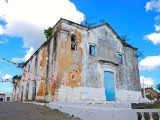
Located on the highest hill in the region. The Nossa Senhora do Monte Church is located on the highest hill in the region and can be seen from afar.
However, it is up close that we can be amazed by its dimensions and the beautiful panorama.
The view is one of the most appreciated of the Recôncavo baiano, providing the visitor the unveiling of a landscape that enraptures and enchants.
The monument is located at the end and highest point of a spike (peak of the hill) that is over the waters of the Bay of All Saints.
Access is via a detour from the road that leads from Candeias to São Francisco do Conde.

Judging by its floor plan, the windows of the sacristies and the treatment given to the three side doors, it is a building from the transition from the 17th century to the next, although completed or renovated in the mid-18th century.
6. Cajaíba Island
The island’s mill helped in the economic development of the city.
Cajaíba Island is located in a protected area of the northern coast of Brazil, being bathed by the warm waters of the South Atlantic.
One of its first owners was the Governor-General of Brazil Mem de Sá.
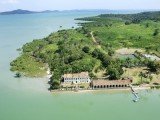
In addition to the natural beauty, including a private beach on the back coast, the island is a stronghold of National History, taking the visitor to the golden age of the sugar nobility.
Engenho Cajaíba was one of the most prosperous in the Recôncavo and contributed greatly to the economic development of São Francisco do Conde.
7. Mill of São Miguel das Almas
The mill, now in ruins, was owned by Paulo de Argollo, grandfather of the Baron of Cajaiba. What remains of the 18th-century big house and chapel has been listed.
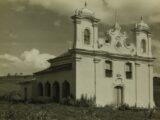
Economic and industrial origin of the territory of São Francisco do Conde
The economic and industrial origin of the territory of São Francisco do Conde, came from the creation of sugar cane mills, the first and main Brazilian economic activity, a period in which Brazil, as a colony, presented itself as the most profitable of Portugal, exporting its production to Europe.
In this context our municipality emerged in the policy of captaincy and sesmarias, among which the States of Bahia, São Paulo, Minas Gerais, Pernambuco, Rio Grande do Sul, Pará and others emerged.
“From the sesmarias, many municipalities. The old settlements became villages, cities and municipalities”.
The sesmaria of Mem de Sá was transformed into “São Francisco do Sítio”, the fundamental nucleus of the future formation of the municipality of São Francisco do Conde, due to its location in the lands of the Count of Linhares, Fernando de Noronha.
In the economic and industrial part, the old Vila de São Francisco overlapped with the sugar cane plantation.
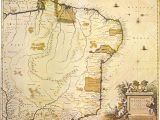
It had more than fifty large mills served by machines, whose names were: Engenho da Vila (Fazenda de São José dos Palmares); da Cajaíba, Dom João, transformed into a mill; Vanique, founded by a Dutch emigrant, Baltazar Vanique; Marapé, Macaco das Pedras, Gurgainha, where the Joanes River rises; São Lourenço, also changed into a mill, Bananeiras, Colônia, today Santa Elisa mill; Itatingui, Guaiba, d’Agua, Monte, Paramirim, Nôvo, Quicengue.
According to Gilberto Freyre in his book “Nordeste” he describes the type of soil predominant in the Reconcavo and its characteristics that most favored the cultivation of sugar monoculture.
The Massapê has another resistance and another nobility. It has depth.
It is sweet land, but it is still firm land: enough for a mill, a house and a chapel to be built on it with solidity. In these patches of sticky earth it was possible to found the modern civilization most full of qualities, of permanence and at the same time of plasticity that has already been founded in the tropics (Gilberto Freyre).
History and Tourism of São Francisco do Conde BA



















